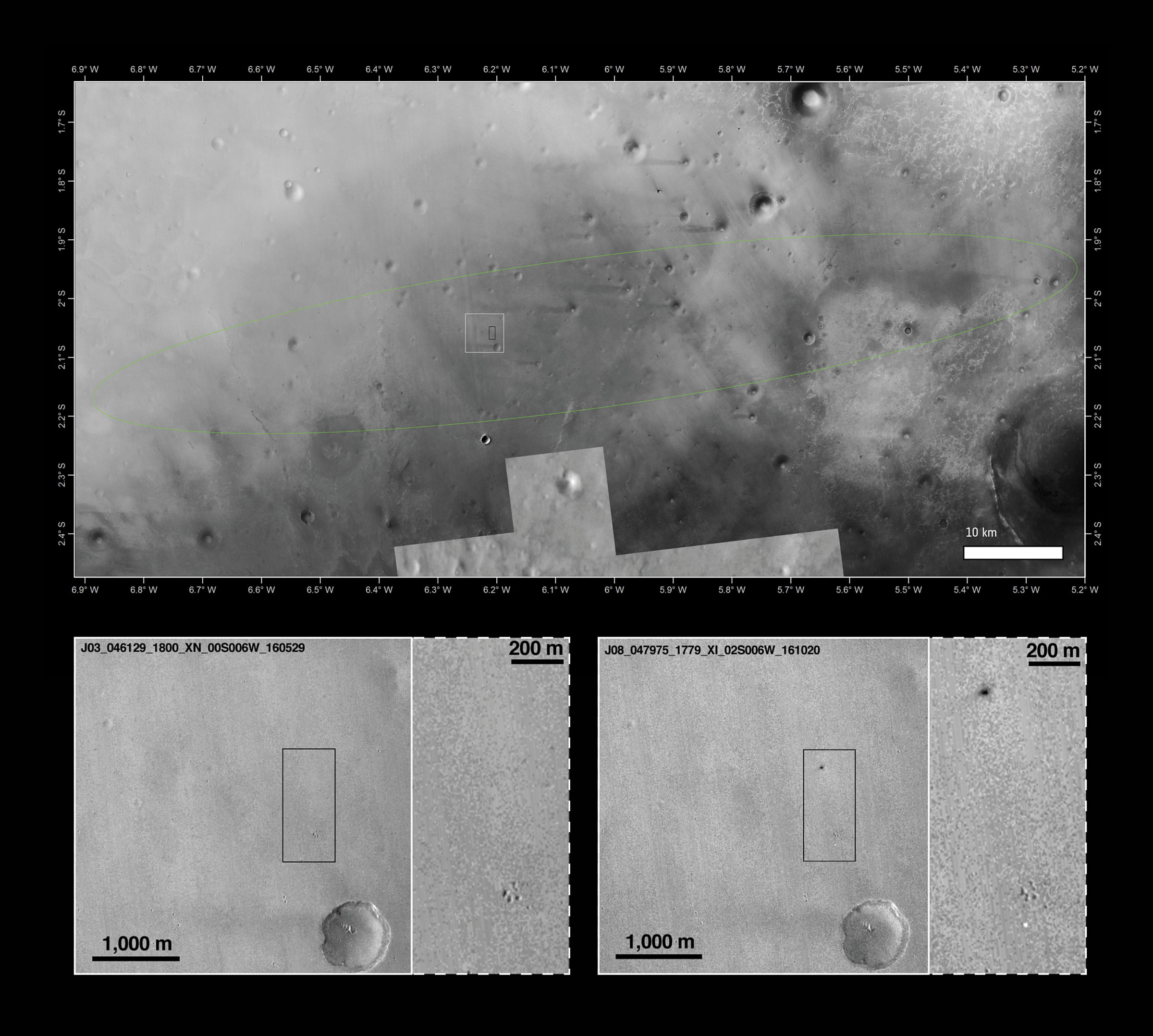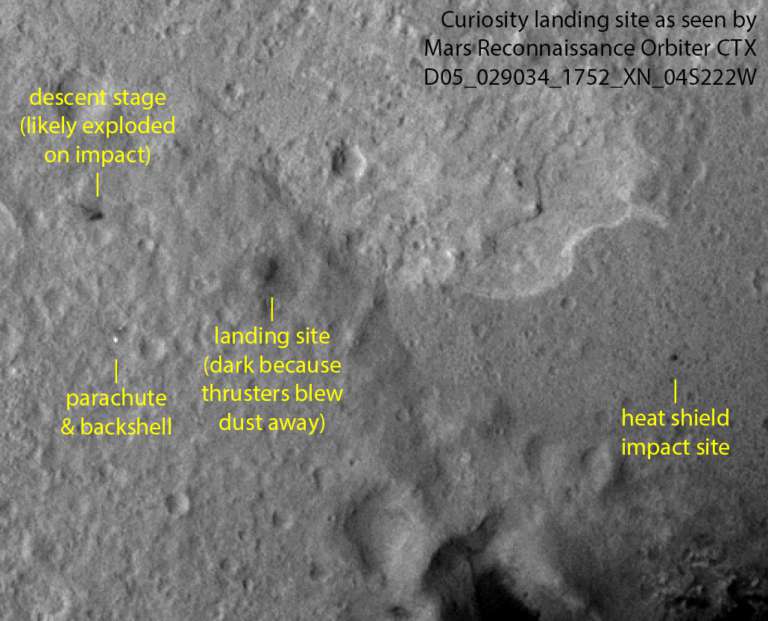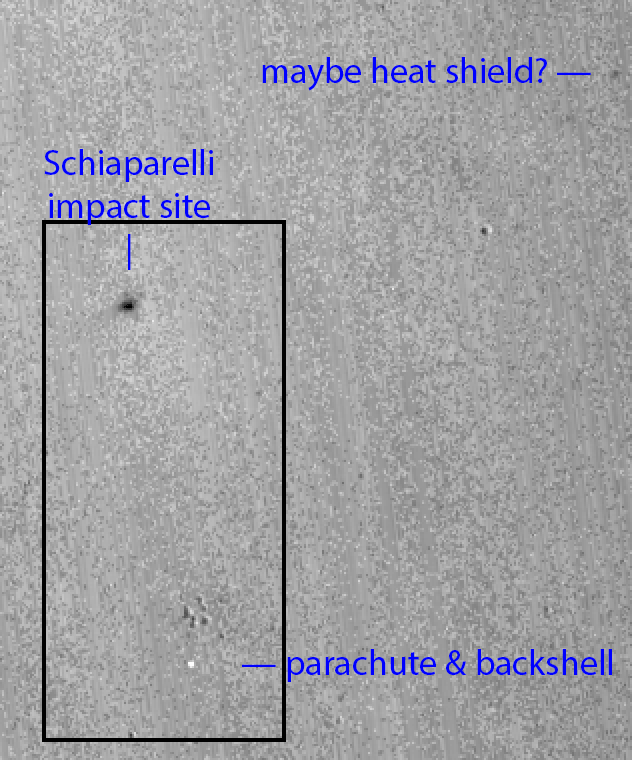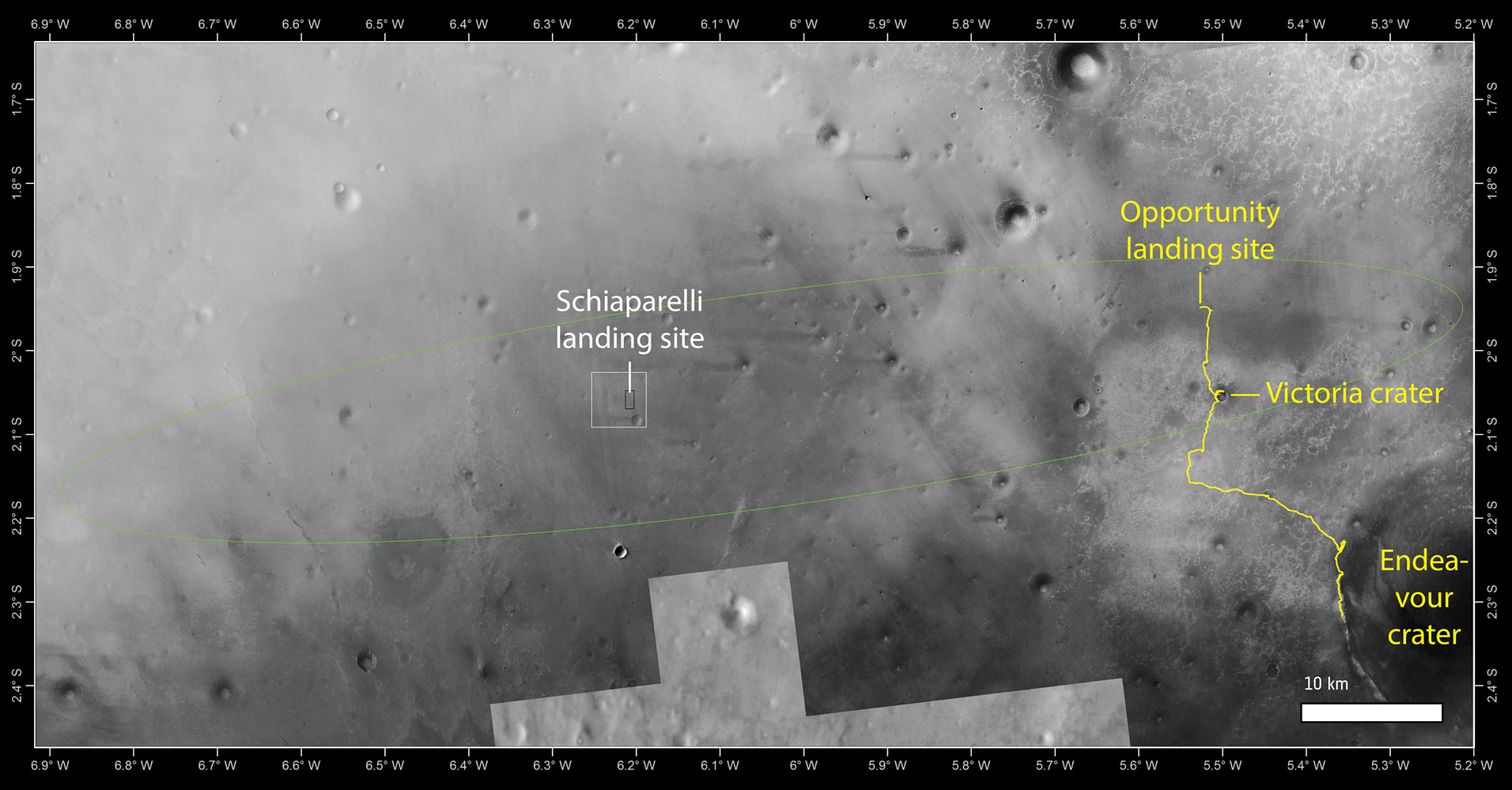Emily Lakdawalla • Oct 21, 2016
Likely Schiaparelli crash site imaged by Mars Reconnaissance Orbiter
Just a day after the arrival of ExoMars Trace Gas Orbiter and its lander Schiaparelli, Mars Reconnaissance Orbiter has taken a photo of the landing site with its Context Camera, and things do not look good. ESA posted the image and an analysis on their website today.

Below the main image are a pair of before-and-after images, taken by the CTX camera on 29 May 2016 (left) and 20 October 2016 (right), respectively. The 20 October image shows two new features appearing following the arrival of the Schiaparelli test lander module on the martian surface on 19 October.
One of the features is bright and can be associated with the 12-m diameter parachute used in the second stage of Schiaparelli’s descent, after the initial heat shield entry. The other new feature is a fuzzy dark patch roughly 15 x 40 meters in size and about 1 kilometer north of the parachute. This is interpreted as arising from the impact of the Schiaparelli module itself following a much longer free fall than planned, after the thrusters were switched off prematurely.Image: NASA / JPL / MSSS / ASU / ESA
Context Camera takes large images of Mars at what is now considered a medium resolution of 6 meters per pixel (back in the days of Viking and Mars Global Surveyor, this was the highest possible resolution). The "fuzzy dark patch" looks a great deal like another impact site seen by Context Camera, where the Mars Science Laboratory descent stage crashed following the successful landing of the Curiosity rover. The descent stage likely had fuel remaining in it when it crashed, and is believed to have exploded on impact. So, too, would Schiaparelli, if its thrusters shut down prematurely.

Where is Schiaparelli's heat shield? ESA's update says the heat shield has not yet been revealed, but sharp-eyed viewers on both unmannedspaceflight.com and NASAspaceflight.com have pointed out a spot on the "after" image that is a distinct possibility, lying in the right direction and at an appropriate distance from the lander.

Time will tell if that guess is correct. Mars Reconnaissance Orbiter will follow up the Context Camera image with HiRISE imaging within the next few days, when imaging geometry is right. The relative positions of landing site and parachute will make it possible to target them both within the same HiRISE image, possibly both within the central color swath if the targeting is perfect. But to catch the likely location of the heat shield within one HiRISE image, they'd have to target the color swath away from the lander.
While I was looking at the image of the landing ellipse, I realized that I recognized the features. I knew that the Schiaparelli landing ellipse was very close to Opportunity, of course, but it was still a bit surprising to realize that the entire Opportunity mission has been contained within that one map. I measured, and the Schiaparelli impact site is 54 kilometers away from where Opportunity now sits on the edge of Endeavour crater.

The Time is Now.
As a Planetary Defender, you’re part of our mission to decrease the risk of Earth being hit by an asteroid or comet.
Donate Today

 Explore Worlds
Explore Worlds Find Life
Find Life Defend Earth
Defend Earth

